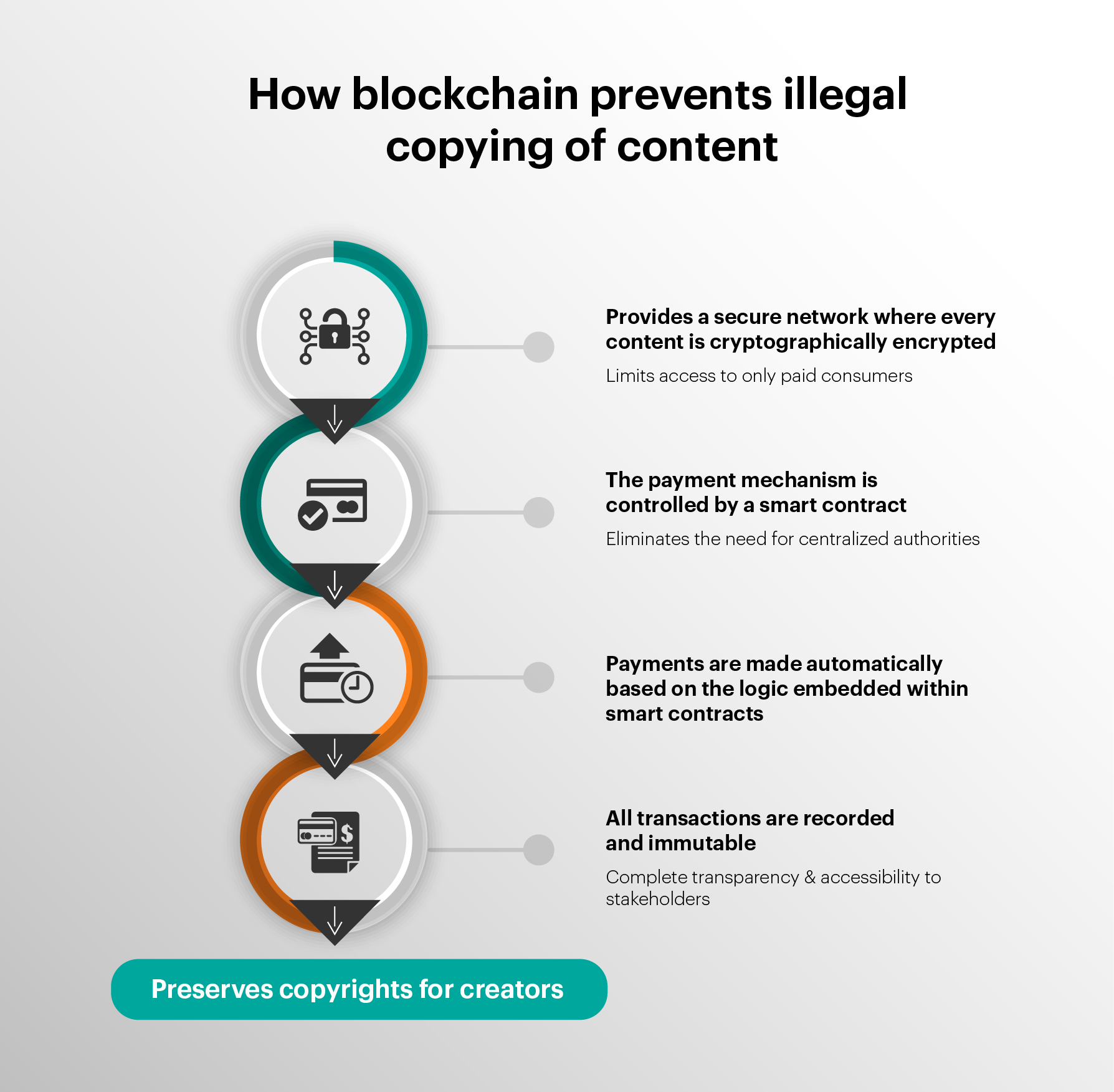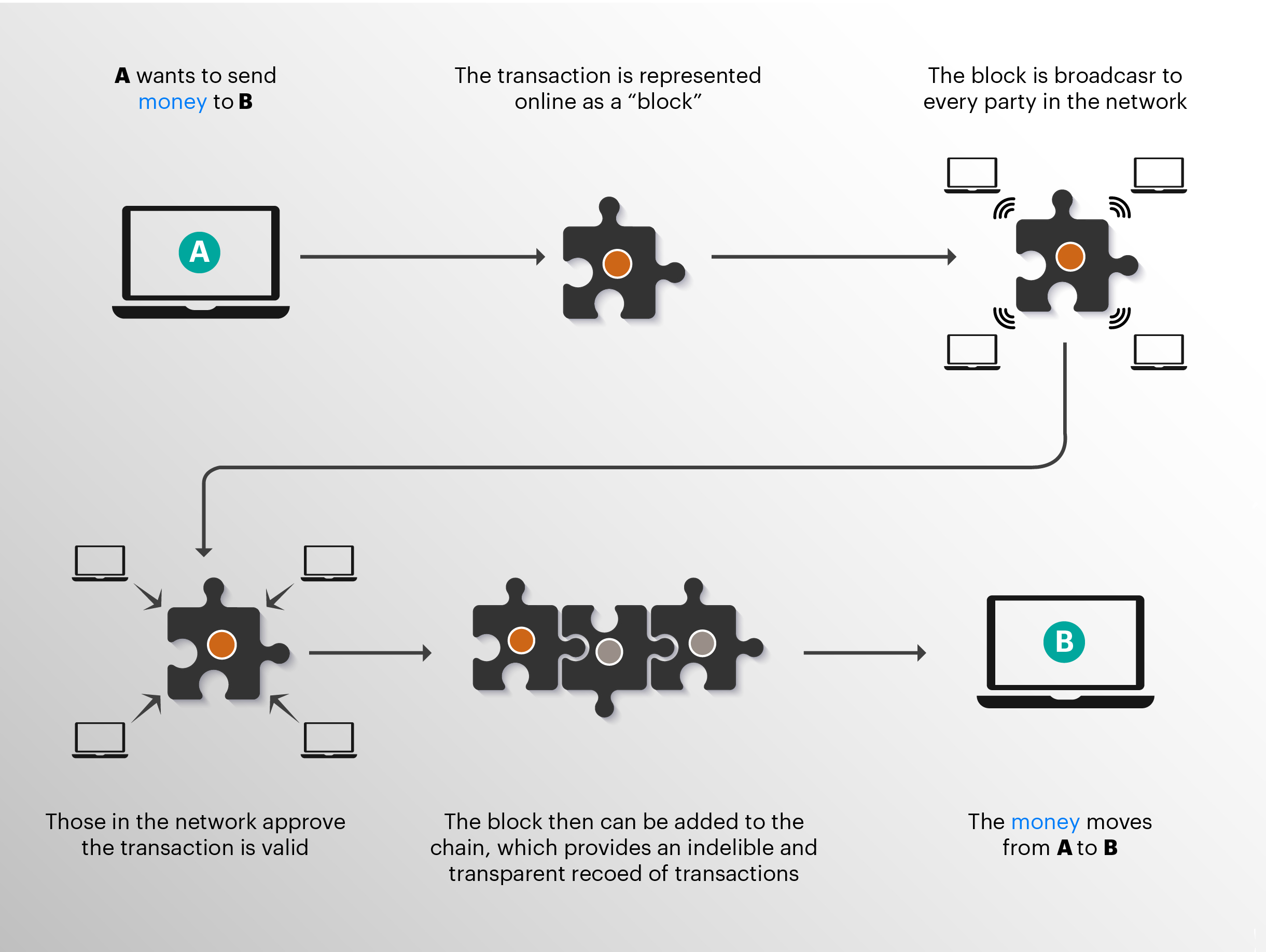The global entertainment and media industry revenue today is worth $2.1 trillion. This trillion-dollar industry is often subjected to multiple risks associated with content distribution, rights management, and royalty payments to artists. Illegal streaming and downloading of content have resulted in multi-billion dollar revenue losses. According to another report, the industry is expected to lose around $51.6 billion due to copyright piracy in 2022.
Very often, pirated copies of digital music are made quite effortlessly and most of the attempts to prevent it from piracy have been vanquished. This in turn affects the royalty payments that are paid to the creators for the rights to use or publish their content. Also, payments are not always guaranteed and are based on traditional airtime figures. There is no effective way to control content distribution.
That was, until now.
Regain your control, creators!
With the revolution of blockchain, the industry’s incessant problems will now have apposite solutions. The use of blockchain technology can be extremely effective in solving problems like copy protection and royalty programs. The technology connects consumers, artists and all other stakeholders in the industry and provides full transparency over the distribution process.
Blockchain provides a network where every digital music is cryptographically encrypted to ensure its access only to paid customers. This payment mechanism for accessing the content is controlled by a smart contract, thus eliminating the need for a centralized authority. The payments are made automatically based on the logic embedded within these smart contracts and the permissions prescribed for the number of downloads. All transactions in the blockchain network are recorded and immutable, thus making the process completely transparent and accessible to all the stakeholders. This prevents illegal copying of digital music files altogether, consequently preserving the copyrights for creators.
Blockchain – connecting content & creators
The cryptographic feature of blockchain technology enables the creator to be tied to his/her content to avoid plagiarism. For instance, a digital music file on a blockchain network contains the owner’s information and the time stamp. Both of these are immutable and traceable. The legal owners of the content are cryptographically linked to it. This ownership cannot be transferred to another user unless the original owner grants permission. Copyright transfers are easily managed and traced with blockchain as all transactions are recorded and cannot be tampered with. Smart contracts can then control all the distribution and payment to the concerned parties.

Blockchain technology provides owners of intellectual property (IP) with tools to better monitor and protect their work. Preventing plagiarism of any previously copyrighted content is just one of the many applications the blockchain technology has to offer. Blockchain for businesses will reduce the enterprises’ dependency on multiple security tools and has the potential to create high levels of trust for any transactions, thus enabling leaders to focus on better marketing strategies. This trust factor combined with the ease of use is driving the demand for blockchain amongst enterprises.
Blockchain for media & entertainment industry
The media industry is on the front lines of the digital revolution. By adopting multiple emerging technologies, the industry is enriching its user experience through data-driven insights that in turn build a strong brand value and engaging social media presence.
The media industry often faces the challenge of controlling ownership and distribution. Web3 applications allow creators to effectively monetize their art. Creators can also set up an NFT marketplace, apply smart contracts to profit from future sales and reward loyal fans who invest early in their success.
Here are some ways by which the media industry can mitigate the existing challenges:
Asset Management Security
The media industry has not been able to control the digital sharing of content effectively. Blockchain applications allow creators to verify identities, limit sharing and retain ownership of digital assets.
New Revenue Streams
Blockchain enables creators to sell exclusive assets as NFTs and retain a portion of the profits from these assets as they are traded further in the future. This accountability also affects streaming, where pay-as-you-go models empower consumers and reward artists directly.
Fan Connections
If an artist wishes to sell shares of their career at a launch party, it allows his/her fans to be part of their journey and reward the fans with loyalty as their career expands. It is similar to a fan club where multiple parties are involved to ensure revenue remains inside the creators’ community.
Blockchain in Television
Blockchain can vet digital assets and eliminate fake videos before they make it to the news. Consumers can pick the channels they want and pay only for the content they wish to consume. NFTs can create exclusivity in a streaming world where everything is available all the time.
Blockchain in Film Distribution
Blockchain can address challenges associated with identity, ownership and copyright. For instance, scenarios where an actor wants to be paid depending on the success of the movie, a studio wants to accurately price ads and product placements or when creators want to control access and ownership of work.
Blockchain in Music
The legacy of Napster lives on in the peer-to-peer sharing of music files to this day, and an entire industry had to adapt. But challenges with payments, stream tracking and payment distribution persist. Blockchain applications like smart contracts, NFTs and micropayments can be the apt solution that this industry needs.
Unique features of Blockchain
Blockchain is a promising technology backed by its three core strengths – transparency, immutability and impeccable security. Though known for its popularity in the banking sector, blockchain is a futuristic technology that is set to disrupt all verticals with its distinctive applications. Here are a few examples of how blockchain’s unique features can be applied to the media industry.
- Immutability: Helps with censorship resistance.
- Security: Orderly data structures which result in a high degree of auditability and reliability.
- Transparency: Enables the visibility of ledger information across all users.
- Resistance: Prevents the alteration of data, eliminates asymmetric information.
- Invulnerable: Blockchains are also distributed, which means there is no single point of failure or attack vector for hackers or other malicious actors.

Benefits of Blockchain in media and entertainment
The music business is still primarily operated on legacy systems and antiquated business models which were developed at a time when songs were predominantly distributed offline and not released on the internet. Only a few competitors have managed to keep up with digitization, and they now control the streaming business, squeezing off income for artists.
The open and decentralized nature of the public Ethereum platform will allow actors in the entertainment industry to reap the following benefits:
- Decreased IP infringement
- Disintermediated content from industry intermediaries
- Direct monetization of all copywritten assets through smart contracts and p2p micropayments
Digital piracy, fraudulent copies, infringed studio IP and duplication of digital items cost the US film and TV industry an estimated $71 billion annually. Enterprise Ethereum enables artists and creators to digitize the metadata of their unique content. It also manages and stores IP rights on a time-stamped and immutable ledger. Blockchain, with its append-only structure, makes it easier for creators to legally enforce their rights if infringement happens .

